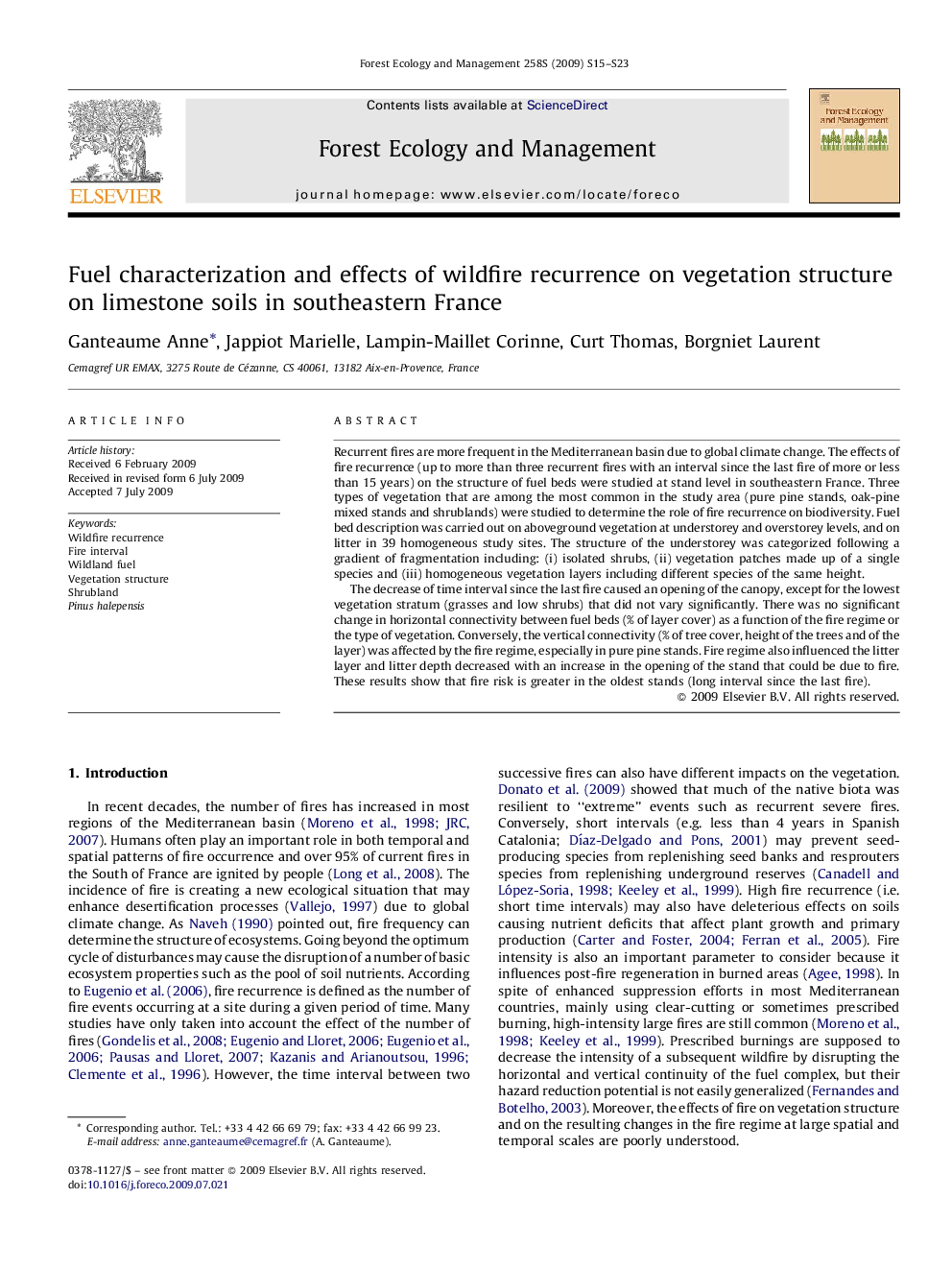| کد مقاله | کد نشریه | سال انتشار | مقاله انگلیسی | نسخه تمام متن |
|---|---|---|---|---|
| 88361 | 159300 | 2009 | 9 صفحه PDF | دانلود رایگان |

Recurrent fires are more frequent in the Mediterranean basin due to global climate change. The effects of fire recurrence (up to more than three recurrent fires with an interval since the last fire of more or less than 15 years) on the structure of fuel beds were studied at stand level in southeastern France. Three types of vegetation that are among the most common in the study area (pure pine stands, oak-pine mixed stands and shrublands) were studied to determine the role of fire recurrence on biodiversity. Fuel bed description was carried out on aboveground vegetation at understorey and overstorey levels, and on litter in 39 homogeneous study sites. The structure of the understorey was categorized following a gradient of fragmentation including: (i) isolated shrubs, (ii) vegetation patches made up of a single species and (iii) homogeneous vegetation layers including different species of the same height.The decrease of time interval since the last fire caused an opening of the canopy, except for the lowest vegetation stratum (grasses and low shrubs) that did not vary significantly. There was no significant change in horizontal connectivity between fuel beds (% of layer cover) as a function of the fire regime or the type of vegetation. Conversely, the vertical connectivity (% of tree cover, height of the trees and of the layer) was affected by the fire regime, especially in pure pine stands. Fire regime also influenced the litter layer and litter depth decreased with an increase in the opening of the stand that could be due to fire. These results show that fire risk is greater in the oldest stands (long interval since the last fire).
Journal: Forest Ecology and Management - Volume 258, Supplement, 14 December 2009, Pages S15–S23